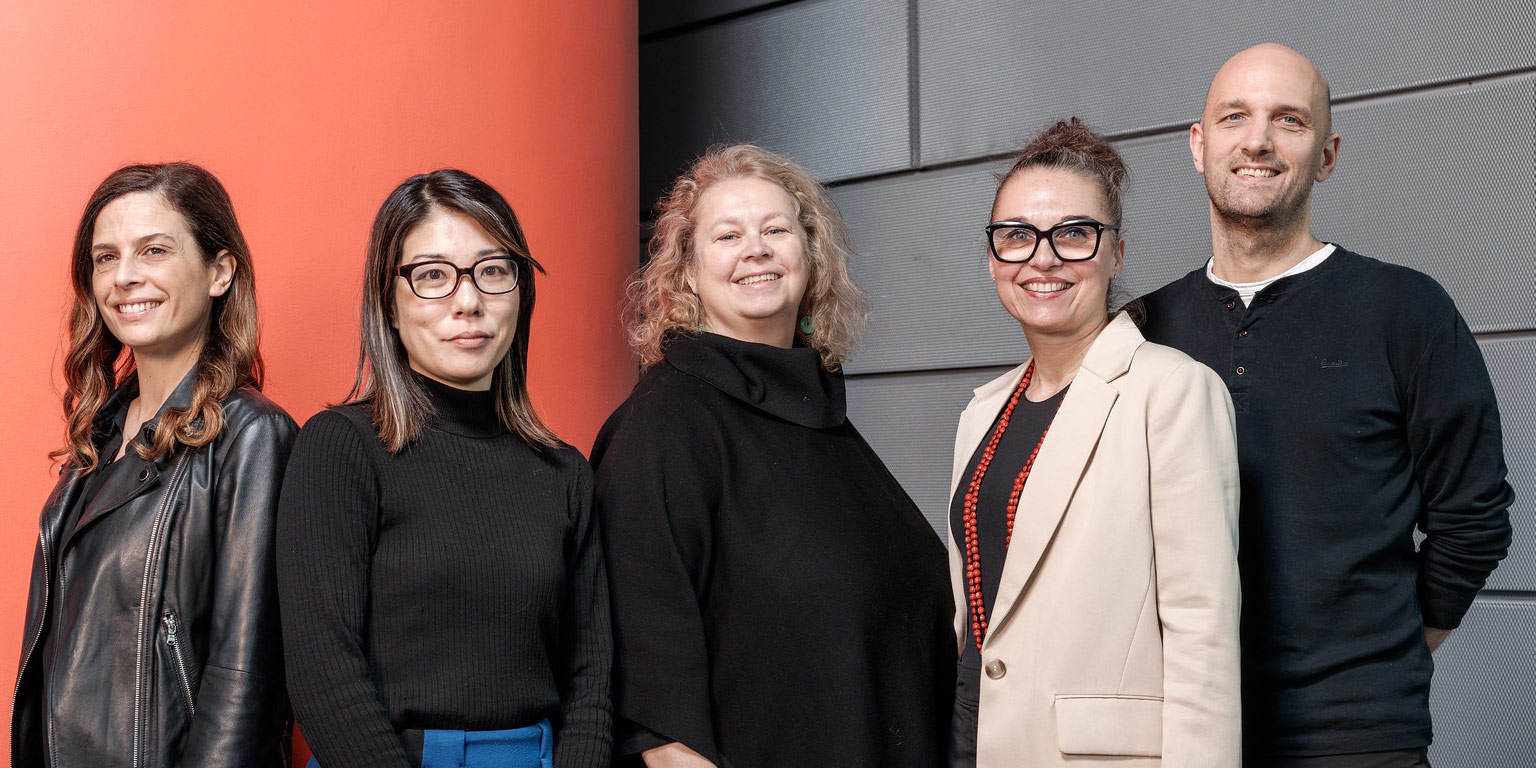2024 S+T+ARTS Prize Jury
All submissions are judged by a jury to decide on the two prize-winning projects and up to ten honorary mentions.

Francesca Bria (IT) is the President of the Italian National Innovation Fund and a Board Member of the Italian public broadcast company RAI. She is Honorary Professor in the Institute for Innovation and Public Purpose at UCL in London and she is part of the High-level Roundtable for the New European Bauhaus set up by the EC President Ursula von der Leyen. She is the former Chief Digital Technology and Innovation Officer for the City of Barcelona in Spain. In this role, she was leading the smart city Agenda and she was one of the founders of the Cities Coalition for Digital Rights, a UN-backed platform to promote sustainable digitization and urban digital transformation that works for the benefit of all. She has served as Senior Adviser to the United Nation (UN-Habitat) on digital cities and digital rights, launching the People-focused smart cities programme at the World Urban Forum convened in Abu Dhabi that promotes the deployment of technological innovations to realize sustainability, inclusivity, and human rights. Francesca Bria is leading the DECODE project on data sovereignty in Europe, is a member of the European Commission high level expert group Economic and Societal Impact of Research and Innovation (ESIR), and a Senior Adviser on the EC programme STARTS (Innovation at the nexus of Science, Technology and the Arts). Francesca has a PhD in Innovation and Entrepreneurship from Imperial College, London and MSc on Digital Economy from University of London, Birbeck. As Senior Programme Lead at Nesta, the UK Innovation Agency, she has led the EU D-CENT project, the biggest European Project on digital democracy platforms and digital currencies. She also led the DSI4EU project, advising the EU on digital social innovation policies and mission-driven innovation. She has been teaching in several universities in the UK and Italy and she has advised Governments, public and private organizations on technology and innovation policy, and its socio-economic and environmental impact. Francesca has been nominated Commander of the Order of Merit of the Italian Republic. She is in Politico annual ranking of the 28 power players behind Europe’s tech revolution, and she is also Culture Persons of the Year 2020 according to the newspaper Frankfurter Allgemeine Zeitung (FAZ). She has been listed in the top 50 Women in Tech by Forbes Magazine, and in the World’s top 20 most influential people in digital government by Apolitical. She has also been featured in the Italian Magazine Repubblica „D“, amongst the 100 Women Changing the World.
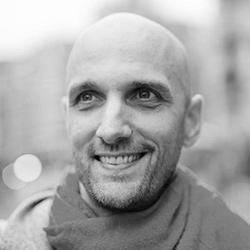
Miha Turšič (SI/NL) works on international collaboration and the initiation of projects touching on the themes of art-science, biotechnology, digital fabrication, open source hardware, ecology, material research and outer space. At Waag Futurelab, he leads the Spacelab while closely involved with Open Design Lab and Open Wetlab. Miha works with the partners in the European S+T+ARTS collaboration, operating on the crossings of science, technology and the arts, where he focuses on methodology for collaborative innovation. He was involved in a number of leading Waag projects such as OpenNext, promoting concern-driven innovation through open source hardware, VOJEXT and Better Factory engaging artists in art-driven innovation with industry, and now coordinating More-than-Planet project focusing on new planetary imaginaries. Miha studied Industrial Design at the University of Ljubljana. He is co-founder of Asobi Design Studio and KSEVT, the Cultural Centre of European Space Technologies. Nowadays, KSEVT is developing a cultural space programme, enabling the understanding of art, culture and humanities in outer space. In collaboration with both space and cultural organisations, KSEVT produced cultural programmes on the International Space Station, introduced space architecture to the biennial of Venice, and presented Voyager instruments to the public for the first time in history. Miha is also part of the Postgravityart group, which produced the very first theatre production in zero gravity and works on the 50-year performance project Noordung 1995-2045.

Fumi Hirota (JP) is Art Producer and Chief of Initiatives Section at the Digital Creativity Division of Tokyo Metropolitan Foundation for History and Culture. After completing graduate studies at the Institute of Advanced Media Arts and Sciences (IAMAS), Fumi Hirota worked as a researcher for the Cultural Media Center at IAMAS. She joined the Yamaguchi Center for Arts and Media (YCAM) in 2008, where she was involved with production and planning for new media art and other projects. From 2012, she was a researcher in the Arts and Culture Division of the Cultural Affairs Department at the Agency for Cultural Affairs. She worked on initiatives promoting media arts, including efforts to expand the reach of the Japan Media Arts Festival overseas and in regional Japan. She left the Agency for Cultural Affairs in 2015 to work at the Japan Foundation Asia Center, where she was involved with media art projects as part of cultural exchange initiatives between Japan and Southeast Asia until 2019. Hirota took up a post at the Tokyo Metropolitan Foundation for History of Culture in 2020, helping launch Tokyo Smart Culture Project, which digitizes cultural resources like the collections of Tokyo’s cultural institutions and offers various types of viewing experiences. In 2022, she was part of the team behind the opening of Civic Creative Base Tokyo (CCBT) in Shibuya.
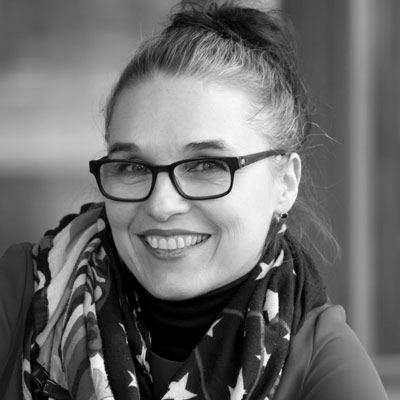
Manuela Naveau (AT) is a university professor, an independent curator and an art-based researcher. For almost 18 years she worked as head of Ars Electronica Export, curator and started as project manager at Ars Electronica Linz, where she developed the Ars Electronica Export department together with Artistic Director Gerfried Stocker and led it operationally since its inception. Since 2020, Manuela Naveau has been a university professor for Critical Data at the Interface Cultures Department / Institute of Media at the University of Arts Linz, which she is heading since February 2023 and initiated the Critical Data Research Group since then. Previously, she has held teaching positions at the Paris Lodron University in Salzburg, the Danube University Krems among others and was invited as a guest professor at the Technical University in Vienna (Future.Lab). Her monography „Crowd and Art – Kunst und Partizipation im Internet“ was published by transcript Verlag, Germany. The book is based on her dissertation, for which she received the Award of Excellence from the Federal Ministry of Science, Research and Economy.
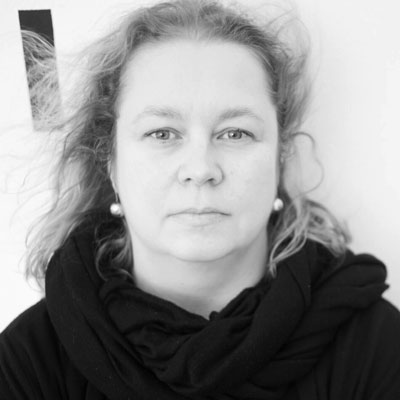
Katja Schechtner (AT) is an urban scientist who develops new technologies and shapes innovative policies to keep cities on the move. She currently focuses on a reassessment of the position of nature and technology within urban governance processes with MIT LCAU and at the same time, tackles questions of urban policy making with a particular emphasis on understanding the human perception of – and interaction with – the built environment with MIT senseable city lab. Previously she led innovation and technology programs at OECD in France, the Asian Development Bank in the Philippines and advised the Inter-American Development Bank in Costa Rica and Argentina, the EU Commission, and headed an applied research lab at the Austrian Institute of Technology – all the while holding visiting professorships, lecturer positions and research affiliations globally, e.g. at MIT Media Lab, Paris-Saclay, dieAngewandte, TU Vienna, or HDM Stuttgart. Her own work has been exhibited among others at the Venice Biennale of Architecture, the Seoul Biennale of Architecture and Urbanism and Ars Electronica – meanwhile her exhibition on „Women Building Cities“ is currently travelling European cities, earning acclaim in major publications like Le Monde, El Pais and Al Jazeera. She has published widely in scientific and public media, including books with Birkhaeuser and Ambra on „Urban Data as Public Space“ and „Accountability Technologies – Tools for Asking Hard Questions“ together with Dietmar Offenhuber. Additionally, she serves on various boards, including the payment tech subsidiary of the Austrian National Bank, the Austrian Institute of Technology and is a member of the founding convent of the new IT:U in Linz, focusing on digital transformation.
2024 S+T+ARTS Prize Advisors
The advisors are renowned international consultants with expertise in this field. They recommend projects and encourage a wide range of potential participants to submit proposals. In addition, they ensure a balance in terms of gender and geographical origin of the participants.
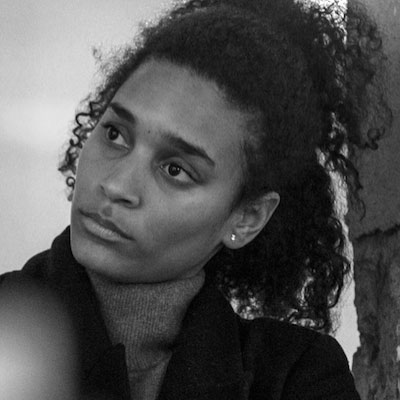
Amanda Masha Caminals (ES) is co-director and curator of the Artistic Laboratory for Climate (LAC-itdUPM, previously known as Mutant Institute of Environmental Narratives-IMNA), the artistic laboratory for climate action of the Innovation and Technology for Development Centre of the Technic University of Madrid. LAC-itdUPM fosters artistic practices in connection with journalism, science and technology as a response to the challenges of the environmental crisis. She is also co-founder of the network Translocalia. Previous to that, she directed the CITY STATION of the Environmental Health Clinic by artist Natalie Jeremijenko at the Centre for Contemporary Culture of Barcelona (CCCB) and the Barcelona City Council. As an independent curator she was responsible for the 2019 edition of Mobile Week Barcelona, a 10 days festival before the Mobile World Congress of Barcelona that formulates an open space of dialogue around the impact of digital technology in society. She has worked in institutions including the Institute of International Visual Arts in London and Casa Triângulo in São Paulo. She holds a BA in Humanities from Pompeu Fabra University in Barcelona, a Degree in History of Art from the University of Barcelona and an MA Hons in Curating Contemporary Art from the Royal College of Art in London.

Yun-Cheng Chen (Lucky) (TW), a freelance trans-disciplinary design artivist and strategist. Having resided in both the United States and Germany, he had the privilege of furthering his studies under the esteemed guidance of Professor Dr. Michael Erlhoff, a pioneer in introducing the concept of Service Design. Lucky’s extensive expertise in performing arts, deliberative democracy, regional revitalization, digital transformation, and the open data/government movement has garnered him numerous invitations to program and execute an impressive array of local and international projects since 2016. He excels in integrating resources and initiating collaborative initiatives among industry, government, university, and global community/DAO. Currently, Lucky serves as the Strategy Director of Les Petites Choses Production and Seabelongings, consultant of Taiwan Dancing Forward Collective, while also actively contributing to g0v/da0.
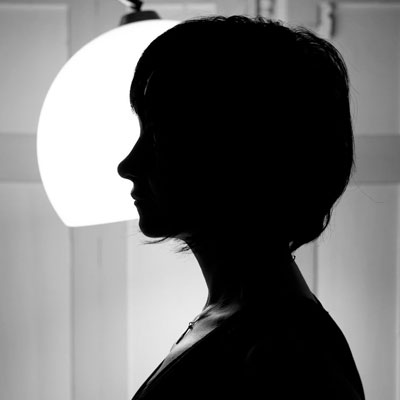
Primavera De Filippi (FR/IT) is a legal scholar at Harvard University, as well as an Internet activist and artist exploring the intersection between law and technology, focusing specifically on the legal and political implications of blockchain technology. Her artistic practice instantiates the key findings of her research in the physical world, creating blockchain-based lifeforms that evolve and reproduce themselves as people feed them with cryptocurrencies. Her works have been exposed in various museums, galleries and art fairs around the world including Ars Electronica, Furtherfield Gallery, Kinetica Art Fair, Gazelli Art House, Centre Pompidou, Grand Palais, Gaité Lyrique, and Le Cent Quatre, as well as festivals such as Burning Man and Fusion Festival.

Rodolfo Groenewoud van Vliet (NL) is co-founder of In4Art – an independent Institute for Art-Driven Innovation, est. in 2015. His interests lie in exploring and prototyping possibilities of technologies and the economics which will influence the shorter- and longer-term futures of food, manufacturing, health and biodiversity. Together with his wife and collaborator Lija Groenewoud van Vliet, he invented and practices the Art-Driven Innovation methodology which is currently driving over 75 international experimental programs and projects involving art, science, technology, and industry.
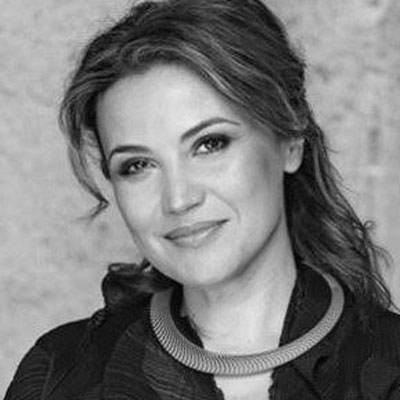
Lydia Kallipoliti (GR) is an architect, engineer, and scholar whose research focuses on the intersections of architecture, technology, and environmental politics. She is a tenured Associate Professor at the Cooper Union in New York. Her work has been published and exhibited widely including the Venice Biennial, the Istanbul Design Biennial, the Storefront for Art and Architecture in New York and the London Design Museum. She is the author of the awarded book The Architecture of Closed Worlds, Or, What is the Power of Shit (Lars Muller Publishers, 2018), and the editor of EcoRedux, a special issue of Architectural Design magazine (AD, 2010). She is the principal of ANAcycle thinktank, which has been named a leading innovator in sustainable design in Build’s 2019 and 2020 awards.
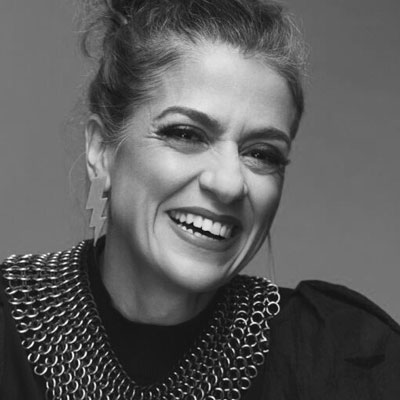
Micaela Mantegna (AR). Known as the ‚Abogamer‘, Micaela is a video game lawyer and activist who is internationally renowned for her expertise in digital ethics, extended reality (XR) policy, and the complex relationship between artificial intelligence, creativity, and copyright law. In 2022, Micaela was chosen for the prestigious TED Fellowship, and her TED talk on the metaverse earned 1.5M+ views globally. Currently she is an affiliate at the Berkman Klein Center at Harvard University, while also serving on Chatham House’s Responsible AI Taskforce, the World Economic Forum’s Metaverse Council, and the Scientific Committee of UAMetaverse Chair, positions that highlight Micaela as a global thought leader in Generative AI, ethics, videogames and metaverse policy. As a keynote speaker, she has presented across the globe in conferences like GDC, TED, GamesBeat Summit, Ada Lovelace Festival, Vancouver Biennale, More Than Just a Game, RightsCon, DLD, Internet Freedom Festival, and many more, in over 28 countries. Author of „ARTficial: creativity, AI and copyright“ (2022) and the upcoming „Braindancing in the Metaverse: a capitalism of cognitive surveillance“ (2024), her work explores in depth the implications of digital capitalism, at the intersections of intellectual property, AI, art, and ethics. She earned the 2017 Google Policy Fellowship for her work creating an algorithmic governance framework. Her work and insights have been featured in outlets like The Verge, WIRED, and Le Monde. Micaela curates the popular Substack newsletter “This week in the #Metaverse”, offering weekly insights into the latest trends and policy developments on the metaverse, AI, neurotech, crypto and gaming.
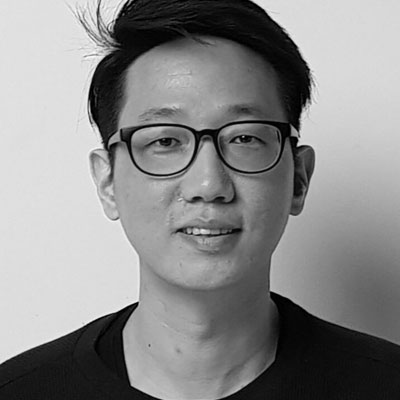
Kyuseung Keith Noh (KR) is Team Lead & Creative director of ZER01NE, which is creative talent platform of Hyundai Motor Group. ZER01NE’s mission is Human-centered Innovation beyond typical Open Innovation of other corporates. ZER01NE is nurturing creators and startups who can challenge and solve the problem of future society through collaboration of ART, TECH and BIZ. Since 2018, over 120 creators and 80 startups were supported and funded. Lastly he is also professional investors and managing partner of ZER01NE Fund.

Irini Papadimitriou (UK) is a curator and currently Creative Director at FutureEverything in Manchester UK. In 2023 she was Artistic Director for the Sea Art Festival 2023 with Busan Biennale, South Korea. She was previously Digital Programmes Manager at the V&A, and Head of New Media Arts Development at Watermans. Recently curated exhibitions include: Flickering Shores, Sea Imaginaries, Sea Art Festival 2023, Busan; AI: Who’s Looking After Me? with FutureEverything and Science Gallery London; Money, Ruins, and the Sea, NeMe, Limassol, Cyprus; [Digital] Transmissions with FutureEverything and Jordan National Gallery of Fine Arts, Amman, Jordan; Plásmata: Bodies, Dreams, and Data, Onassis Stegi, Athens; You and AI: Through the Algorithmic Lens, Onassis Stegi, Athens; Artificially Intelligent, V&A London. Irini is a co-founder of Maker Assembly, a critical gathering about maker culture, and she has been a co-curator for the Arts & Culture experience at Mozilla Festival, including the 2019 exhibition Trustworthy AI: Imagining Better Machine Decision Making. She has served as a jury member for Prix Ars Electronica, D&AD Awards, Lumen Prize, EU STARTS and ACM Siggraph.
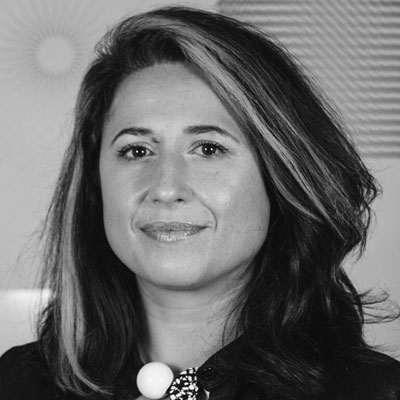
Deborah Rey-Burns (UK/AU). Starting her career in Sydney as a banker, Deborah Rey-Burns later pivoted in London to become a cultural entrepreneur and the founder of Propela, an innovative speaking agency globally known for its commitment to frontier thinking. With a mission to bridge the gap between the creative sector and the business world, Deborah established the British agency over a decade ago. Propela’s roster features a selection of international innovators who have been keynote speakers at major conferences, Fortune 500 companies, and leading brands. Among Propela’s clients are Neil Harbisson, the world’s first Cyborg, along with Oscar-nominated set designers Katie Spencers and Sarah Greenwood (Barbie), artist and technologist James Bridle, Designer Dr. Nelly Ben Hayoun, Speculative Architect Liam Young, Bas Van Abel, the founder of Fairphone, a world leader in sustainability and ethics, and Dr. Sian Proctor, the world’s first black female spaceship pilot. Beyond Propela, Deborah has curated programs for institutions such as the Victoria & Albert Museum and the Design Council’s COP26 conference, along with organisations such as Google, Airbnb, and Spotify. Furthermore, she has founded ReDesign Business and The Future Of_, two conference brands dedicated to showcasing art, creativity, innovation, and business.
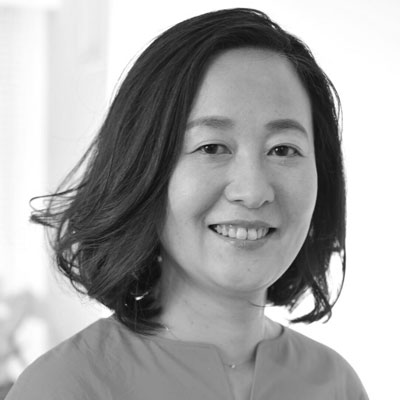
Asako Tomura (JP) is General Manager of Content Technology & Alliance Group, Corporate Technology Strategy Division of Sony Group Corporation. After earning master’s degrees in chemistry and media arts, she began her career in advertising at Shiseido. She joined Sony Corporation in 2001 and oversaw the launch of the digital content distribution business for film and animation at Sony Pictures Entertainment (Japan) and Aniplex, Inc. She then served as Head of CSR Innovation at Sony headquarters, where she collaborated with international NGOs on projects using technology to address social issues. Since 2016, she has overseen advanced content development, entertainment technology promotion, and sustainability technology strategy. In addition, she served as the planning director for Ars Electronica 2021 Garden TOKYO and as a jury member for the European Commission’s STARTS Prize 2022. She is also an advisor for the Project to Support Emerging Media Arts Creators, Agency for Cultural Affairs, Government of Japan, 2017-2024. Since 2021, she is a Visiting Researcher at the Interfaculty Initiative in Information Studies at the University of Tokyo.

Lining Yao (CN) is an Assistant Professor at the Mechanical Engineering department, the University of California, Berkeley, where she directs the Morphing Matter Lab (morphingmatter.org). Her research explores the positive impact of active and morphing materials on sustainable design across different scales and contexts. Her work focuses on discovering and studying morphing material mechanisms, as well as algorithms for computational design and fabrication pipelines. Dr. Yao has published in both computer science and physical science venues and has received nine Best Paper or Best Talk Awards and nominations from premier conferences in Human-Computer Interaction. Her journal papers have been featured as cover stories in Nature, Science Advances, and Advanced Materials Technologies. Her work has been widely featured in popular media outlets, including The New York Times, Wired, Scientific American, Fast Company, National Geographic, and BBC, among others. Dr. Yao received her Ph.D. from the MIT Media Lab in 2017. She is the co-founder of the MorphingMatter4Girls Initiative, a Wired UK fellow, and an appointed instructor in eco-design by the United Nations Industrial Development Organization.
Infrastructures of Power and Care
Statement of the STARTS Prize’24 Jury
Francesca Bria, Fumi Hirota, Manuela Naveau, Katja Schechtner, Miha Turšič
We are writing this jury statement at a very special time, as important elections and political challenges are coming up in the next few months, at both European and global level. These are uncertain times, heated up with dystopian visions of the future of a polycrisis and aggressive promises of salvation through the elimination of constructed enemy images. Political participation is becoming more than emotionalized and the space for the formation and promotion of participation mechanisms, democratic attitudes, and discourse for the purpose of open knowledge is dwindling. Europe is struggling and the number of critical voices is diminishing at the same time as political opinion-forming and expression are being taken over and cemented by artificially intelligent social media platforms.
A look at this year’s submissions for the STARTS Prize showed many voices and actions that stand out and strive to create counter-images and counter-reactions, engaging with ideas in order to bring about change. In addition to socio-politically motivated artistic/scientific debates such as How will we learn in the future?, How will we work or love in the coming decades? and How will we cure ourselves and how will we take care of and live with other living beings?, this year’s focus was once again on the examination of technology in the sense of big tech and internet giants, and above all related to the debate on the exploitation of our planet, questions on extractivism, and embodied situated knowledge. How important is locally anchored knowledge? How does AI reinforce the power structures inherent in technology and what impact does this have on a constantly changing and evolving knowledge environment? Who shapes technology in Europe and who offers space for reflection and co-design? And how can technological progress and innovation be reconciled with taking care of all forms of living organisms?
All these questions that we as a jury have been confronted with culminated in reflections on existing technical and social infrastructures and on infrastructures needed in order to achieve transnational size and visibility on the one hand and to enable co-design and discourse on the other. Topics such as ‘alternative infrastructures’, ‘real-world’ infrastructures, or infrastructures that enable an ecosystem of experimentation and research were discussed. The many approaches in the Honorary Mentions and Nominations show that there is a living tradition of alternative infrastructures in Europe that must continue to be promoted and supported. The fact that we need more best practice examples of large-scale European infrastructures of sci-tech brings us directly to the Grand Prizes and our selection.
Perhaps never before has a jury been as unanimous as this year, as it was quickly decided that the Grand Prize for Innovative Collaboration would go to Arts at CERN, the art program of CERN, the European Organization for Nuclear Research Laboratory in Geneva. The program, which has been involved in Art/Science debates and developments for 12 years now, deserves the prize, which not only goes to the organization, but also to the people behind the organization: the scientists, artists, creative technologists and cultural managers in an extraordinary interplay and long-lived inter- and transdisciplinarity. Above all, this program is an example of how science, technology, and art can interact as equals. Methods from research meet methods from the arts and cross-fertilize each other cyclically. It goes without saying that an infrastructure like CERN conducts research in the field of physics, such as the structure of matter and the movement of light or sound waves. But the research findings are also reflected in very topical issues e.g. relating to climate change, and Arts at CERN creates and showcases common space for critical thinking by researchers from physics and the arts.
The Grand Prize for Artistic Exploration goes to Calculating Empires: A Genealogy of Power and Technology, 1500-2025 by Kate Crawford and Vladan Joler. The artists spent four years working on this large-scale research project, which is presented in the form of a map room. It is a visual manifesto on technology and power relations throughout the last five centuries and contains an overwhelming amount of information that was translated and localized as graphics in an extremely appealing way. The starting point of Joler and Crawford’s research is the 1500s, when empires started to use technology to centralize and consolidate their power—a phenomenon that persists to the present day—and to ask: What kind of world do we want to live in? As a jury we continue to ask: How can an infrastructure in Europe be created that allows society to influence technological developments, i.e. technology for the sake of society and the environment we live in? Infrastructures of power and care?
It was interesting to observe that critical cartographies, the mapping of power structures in technology or finance or the graphic recording of changes in landscapes and bodies were reflected in some of the works submitted. But topics such as memory and contested history, critical tech and feminist tech, female bodies and the questions of care, multispecies care and power, as well as the topics of low carbon food and community activities were also discussed and ended up in the ten Honorary Mentions and eighteen Nominations. We looked at visually stunning installations, sound experiences, (lecture) performances, games, VR/AR settings, brain computing works, and smart and alternative robotic manufacturing tools, but the final selection underlines the possibility of scalability, which we recognized as an important parameter for the future.
These considerations ultimately led us into a phase of critical S+T+ARTS reflection: What infrastructures will we need in Europe in the future, and how can we use them? How can we maintain the authentic speed of do-it-yourself while at the same time making the work scalable? What is missing in this ecosystem—e.g. the role of mediators, facilitators, or catalysts—and what can be done to change this? How can large but also smaller companies and policy makers benefit from working with artists, and how can S+T+ARTS mediate better between its disciplines? We urgently hope that S+T+ARTS will continue to recognize projects that demonstrate a successful integration of science, technology, and art and even evolve into a platform for further discourse, support, and networking, which is of great importance in times when technological developments go hand in hand with social and economic innovation.
Grand Prize: Innovative Collaboration
Awarded for innovative collaboration between industry or technology and the arts (and the cultural and creative sectors in general) that opens new pathways for innovation.
Arts at CERN
Arts at CERN is a pioneering cultural initiative, reflecting CERN’s exceptional openness and experimental spirit. Established in 2009, the program has evolved into a comprehensive arts residency scheme with significant international influence, under the leadership of Director-General Rolf Dieter Heuer, initiator, former Founding Director, and curator of Arts at CERN Ariane Koek, and current Head of Arts at CERN Mónica Bello. The program includes several key components, such as the Collide Residency, a three-month program offering both international and Swiss awards, fostering networks between art and fundamental science worldwide; the Accelerate Residency, a one-month research residency with two annual awards, funded by different countries; and a Guest Artists Program, engaging artists across disciplines such as design, and digital arts, film, dance, visual arts, music, theater, literature, and architecture. What makes Arts at CERN exceptional is the unique space. Located just outside Geneva, CERN is home to the world’s largest particle physics laboratory and the Large Hadron Collider, a 27-km machine that recreates conditions from the universe’s inception 13.7 billion years ago. With approximately 12,000 scientists, technologists, and engineers from 680 institutions in 120 countries, CERN is a hub of imagination and inspiration. Arts at CERN has inspired numerous exhibitions, performances, and events, showcasing the mutual benefits of collaboration between artists and scientists. Artists gain new perspectives on their work, while scientists explore different approaches to their research, considering the broader implications for humanity, society, and nature. Since its full implementation in 2012, the Collide Residency program has partnered with cities like Linz, Liverpool, Barcelona, and Copenhagen to support artistic research and exploration. This collaboration between CERN and major cultural institutions has established a model for integrating arts, science, and technology. Arts at CERN has set a global benchmark for arts-science initiatives, influencing programs in Europe, South Korea, and Australia. It has inspired major initiatives such as the European Commission’s STARTS program and the Joint Research Centre’s sci-art program. In today’s rapidly evolving technological landscape, including advancements in AI, quantum computing, and chip technology, the integration of arts, science, and technology is crucial. Arts at CERN exemplifies how leveraging key scientific and technological infrastructures, multidisciplinary talent, and capacity in Europe can drive innovation and foster a collaborative innovation that truly serve the public interest.
Grand Prize: Artistic Exploration
Awarded for artistic exploration and art works where appropriation by the arts has a strong potential to influence or alter the use, deployment, or perception of technology.
Calculating Empires: A Genealogy of Power and Technology, 1500-2025
Kate Crawford (AU), Vladan Joler (RS)
How can we understand the entanglement between technology and power today? The technological systems, from AI chatbots to international border controls, are increasingly automated and opaque. If the world is to address the current challenges of the climate crisis, hallucinating AI systems, and war, we need to understand how these processes are interwoven.
Calculating Empires charts the technological present by depicting how power and technology have been intertwined since 1500. It is a codex of technology and power that shows how echoes of empires past resonate in today’s technology companies. With thousands of individual drawings and texts, Kate Crawford and Vladan Joler visualize these major shifts in an intricate visual manifesto about the way empires have used technology to centralize and consolidate their power. The vast diagrammatic diptych draws audiences into a dark passage to study on one wall the histories of communication and computation, while the opposite wall addresses systems of classification and control. Read together, these maps illuminate technical and social structures that co-evolved over centuries. By seeing how past powers have calculated, we can begin to calculate the costs of contemporary empires. Calculating Empires thus gives audiences a detailed visual narrative about the relationship between humans, ecologies, and technologies. It traces the ways that technology and power have been entwined over five centuries, through industrialization, imperialism, and automation. It shows how practices of colonialism, militarization, and enclosure operate today and how they might be unwound. It establishes itself as a necessary corrective to the current short-termism in technology criticism and art, which is frequently focused on the most recent spectacles and devices, at the expense of deeper historical and political shifts. Calculating Empires challenges us to redefine our relationship with current socio-technical structures. By asking how we got where we are today, we can (re-)consider where we might be going.
Honorary Mentions
The Echinoidea Future – Adriatic Sensing
Robertina Šebjanič
While the majority of Europeans have no direct experience with the oceans and seas, ocean life knows far more about us than we do about it. According to scientific studies, there is an understanding that humans are having an extremely negative impact on the oceans, from direct sound and chemical pollution to indirect influence through climate change. While some of these insights stem from the use of organisms such as sea urchins as pollution indicators, they primarily manifest as scientific data too abstract for the general public. The Echinoidea Future – Adriatic Sensing project was developed even further in the STARTS4Water collaboration between the artist, ecologists, cultural organizations, and sea urchins—not as bioindicators but as actual commentators. Such collaboration overcame anthropocentric and domain-based research practices and brings the agency of an organism that inhabits a human-impacted environment directly to the public. Artwork, therefore, provides not only a medium for sea urchins to tell their story, but is an actual catalyst for our environmental empathy, which is an essential element of future environmental literacy.
How (not) to get hit by a self-driving car
Tomo Kihara (JP), Daniel Coppen (GB)
The ever-accelerating development of AI and the expansion of its services are making our lives more convenient. However, they also make the use of data and technology in our society and culture invisible to us. How (not) to get hit by a self-driving car makes the vision system in cars visible, and even reveals the way the vision system’s data is trained and generated. Designed as a game, it is accessible to small children and wheelchair users, and reveals how this AI model is not always able to differentiate between its players. It also offers a wide range of users the opportunity to teach the AI model as well. The exhibition of this project at various venues will offer opportunities for new collaborations between ‘citizens to improve their literacy where AI has become ubiquitous’ and ‘AI models to learn diversity in the world.’ And, in turn, this could be a catalyst that inspires citizens to propose and establish the rules of digital rights in AI for the future.
Korallysis
Gilberto Esparza (MX)
For millions of years coral reefs have adapted to and survived in their environments due to their autonomous systems, and they serve as important ecosystems for surrounding organisms. Humans, on the other hand, are known for putting these systems in danger. So what approach is needed for us to jump into the umwelt of coral reefs? Korallysis is a hybrid organism and technological device which, through electrolysis of the minerals in seawater, creates calcium carbonate that helps the growth of coral. This device is equipped with motion elements that generate electricity from the ocean’s currents and waves. Furthermore, Korallysis proposed an interdisciplinary space for oceanographers, biologists, material engineers, and biotechnologists, where they may create opportunities for local community-building and cultural events including artists, and citizen dialogues and engagement in the arts. This project itself serves as the infrastructure that encourages coexistence and mutually supportive relationships among coral reefs. Korallysis, as a hybrid organism, can be considered a new inhabitant of the coral umwelt that also invites humans to participate in their ecosystem.
Mapping Uncertain Landscape: The Satellite
Sofia Isupova (UA)
It matters what is mapped, how it is mapped, and why. While the majority of satellite and environmental data is today used for remote land use and governance, here the artist explores the opposite—placing herself into the unaccusable land devastated by war. Mapping Uncertain Landscape: The Satellite is critical cartographic work, directing its gaze to the land change caused by war, documenting changes in forests, fields, cities, and infrastructures in a way they matter to the artist as an affected individual. Such critical cartographic practice helps individuals as well as whole displaced communities to deal with ongoing trauma, while also remembering and healing their relation to the land. Satellite technologies here become an infrastructure of care, and not of power, demonstrating the societal relevance of earth observation science and technologies.
Maria CHOIR
Maria Arnal Dimas (ES)
Music has historically been an integral part of our societies, shaping one another in the most creative ways. As we are today confronted with one of the most ambiguous technologies, AI, music provides an opportunity to culturalize its influence on society. Maria CHOIR musical installation is an example of a human-AI built as a shared experience of 11,000 participants contributing their voice to one of the largest choirs performing at a single event. Such a process demonstrated an AI model-learning process as a public event, providing insight into otherwise mystifying processes, with researchers often claiming that even they don’t understand how AI learns and functions. Carrying out research and the development of new technologies in public enhances the societal relevance of these technologies. And though this project sets a new standard for innovative collaborations, it also spotlights the resources required, such as a supercomputing center, a creative coding collective, and a cultural platform.
METABOLICA
Thomas Feuerstein (AT)
With METABOLICA, the Austrian artist Thomas Feuerstein tells a story about life cycles that truly involve transdisciplinary processes in nature, economy, politics, art, and science. The core theme and artistic research is about metabolic processes, made from cultivated algae using bacteria and a 3D printer. Feuerstein, who describes himself as a theorizing media artist, generally uses the method of “conceptual narration” in his works, which combines art, architecture, philosophy, and literature with economics, politics, and technology. In five chapters, these complex installation settings tell a story of change from the industrial revolution to the present and future, from whaling and petromodernity to current and future scenarios of biochemistry and wastewater research. The metabolism of microorganisms is a central theme, as not only is a new material for sculptures produced and partially degraded, but new forms and aesthetics are created.
P2P
Eva & Franco Mattes (IT, US)
P2P redefines art by creating an artist-run server distributing artworks via Torrents through a peer-to-peer network. Housed in a sculpture resembling a data center, it highlights the physicality of the internet, often obscured by metaphors like „the cloud.“ This democratizes access to data and art by using the museum’s infrastructure to seed and download artworks, turning the exhibition space into a functional peer-to-peer network. Despite its minimalistic presence, the installation facilitates widespread access to art in the digital and AI-driven era. Inspired by the book Server Manifesto, edited by architecture critic Niklas Maak, and ideas from architect Rem Koolhaas and digital pioneer Francesca Bria, data centers are understood as democratic architectures and data as digital commons. It challenges the hidden nature of digital infrastructures, emphasizing their environmental impact and energy consumption. P2P invites people to join the network and experience a virtual exhibition featuring works from artists and collectives like Olia Lialina, Jon Rafman, and Do Not Research, exploring different models of online networking—artist-run, distributed, DIY. P2P highlights the potential of art to reflect on the need to democratize technology, experimenting with community owned infrastructures for artistic expression and collaborative digital production. P2P is a case study in alternative models of networking and in rethinking the current centralized and extractive internet.
SELF-CARE
Lyndsey Walsh (US)
As genetic testing and diagnosis is made readily available, what can we do to overcome the gaze and surveillance of medicine, and care for the fears and bonds that families experience in the face of bodily trauma? SELF-CARE is based on the artist’s personal experiences and physical exploration after learning of their mother’s breast cancer diagnosis and subsequent diagnosis of the hereditary BRCA1 gene. The wearable chest binder is specifically designed to house living BRCA1 cancer cell lines and allows the wearer to care and treat it before it turns malignant in the body. Consisting of this original device, developed with the aid of experimental biophysics, and conversations with the artist’s family, the work reexamines the politics surrounding the identity of the so-called “female body” under advanced medical surveillance. It could be said that SELF-CARE allows us to liberate our bodies from social, sexual, and reproductive expectations and, instead, encourages us to take care of our bodies.
The Waterworks of Money
Carlijn Kingma (NL)
Although money plays a key role in everyone’s lives, the inner workings of the monetary and financial system are a mystery to most. The Waterworks of Money visualizes the flow of money through society through metaphors, maps, and animations, and explores options for improving the money system in the digital age. Today, Europe is facing the challenge of inequality. Many Europeans are dealing with a cost of living crisis while financial instability remains an ongoing threat. At the same time, the European economy needs to become more sustainable and resilient. Meanwhile, the digitalization of our economy has created new opportunities to redesign the current money system. These challenges can, however, not be seen in isolation from the architecture of the monetary system. Designing this system—and the laws and institutions that govern it—is ultimately a democratic task. In practice, however, there is a major obstacle impeding the democratic process: financial illiteracy. By making the world of money understandable, The Waterworks of Money assists citizens in developing their own vocabulary to participate in the debate about the future of money.
VRJ Palestine
Nisreen Zahda (PS)
The VRJ Palestine (Virtual Reality Journey to pre-Nakba Palestine) project, initiated by Nisreen Zahda in 2020, represents a groundbreaking endeavor in the virtual reconstruction of Palestinian villages destroyed during the Nakba in 1948. This project employs advanced 3D modeling and real-time rendering software to recreate the spatial structures and memories of these villages, offering an engaging and immersive experience for the public. Among the notable works of VRJ Palestine are the „Nakba Timeline Map,“ a digital map that documents the systematic depopulation, ethnic cleansing, and destruction of cities and villages during the Nakba, and „A Virtual Return Journey to Destroyed Villages of Tantura, Hittin, and Zir’in.“ Through detailed photographic and archival research, these reconstructions bring new life to erased places. The fishing village of Zir’in and the historic village of Hittin, where Saladin famously defeated the Crusaders in 1187, are vividly recreated, preserving their rich histories. Additionally, VRJ Palestine pays homage to the victims of the Tantura massacre, a tragic event that the Israeli state continues to deny despite compelling evidence presented in the documentary Tantura by Israeli director Alon Schwartz. VRJ Palestine is a vital and innovative tool for documenting and presenting the Palestinian narrative. By virtually reconstructing over 400 destroyed or depopulated villages from the 1948 war, the project ensures that the memories and histories of these places are preserved and accessible. It allows people to engage with and become part of these reconstructed spaces, fostering a deeper understanding and connection to Palestinian heritage. The VRJ Palestine project presents a visionary approach and dedication to preserving Palestinian history through the powerful medium of virtual reality. Its contributions are invaluable in the ongoing effort to document and share the rich cultural heritage of Palestine with the world.



